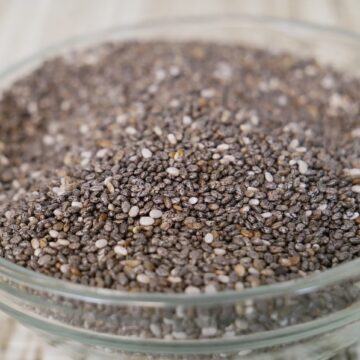
-
- Chia seeds are nutrient-dense toppings you can add to any dish.
- Chia seeds promote the feeling of fullness, which aids in weight loss.
- You can substitute eggs with chia seeds when baking.
Chia seeds are nutrient-dense

According to marketing research firm Mordor Intelligence, chia seeds have become so popular that by 2024, it is projected to reach more than $88 million.
Jenna Gorham, a Montana-based registered dietitian and licensed nutritionist, says nutritionist experts love Chia seeds because of its nutritional contents. There are about 140 calories, six grams of protein, eight grams of fat, and 11 grams of mainly soluble fiber in two tablespoons of chia seeds. Chia seeds are also full of vitamins, minerals, and antioxidants.
Besides adding them as toppings on cereal and yogurt, chia seeds can also thicken pudding or overnight oats, and boost fiber in baked goods.
Here are other things you should know about the nutritional value and health benefits of chia seeds.
Different types of chia seeds

Besides being easy to digest, Chia seeds also don’t have to be ground for better absorption. These seeds come from the Salvia hispanica L. plant endemic in Mexico and Guatemala where it was used as early as 3500 BC as offerings to Aztec gods in religious ceremonies.
Chia seeds come in black and white, but both contain the same nutrients. Susan Bowerman, a registered dietitian in Los Angeles, says the black seeds are smaller than the white and are sometimes more palatable than the white ones.
Chia seeds offer many other health benefits

The fiber and healthy fat content of chia seeds may regulate blood sugar spikes and cholesterol levels, explain Bowerman. Chia seeds also contain calcium.
In a small study published in Diabetes Care, researchers found that consuming four tablespoons of chia seeds daily for 12 weeks helped reduce cardiovascular disease risk, which was not seen in the placebo group.
Chia seeds and weight loss

Chia seeds also help with weight loss because they become more filling and satisfying when added to dishes, says Bowerman. The fiber content of chia seeds also promotes a healthy gut.
Risks and side effects

Too much chia seeds can upset your digestive system. If it’s your first time eating chia seeds, start with one teaspoon and gradually increase your intake, so your body can adjust to the fiber content, explains Bowerman.
Best way to eat chia seeds

You can blend chia seeds into smoothies or yogurt, used as salad toppings, baked into bread or muffins, or added to fruit juice, says registered dietitian Melissa Nieves. You can also eat them by themselves.
Chia seeds are also great for those on a plant-based diet. Besides their protein content, they can also provide 15 percent of the daily recommended value for iron and calcium.
You may also use chia seeds as a healthier substitute for eggs when baking. Simply mix one tablespoon of chia with three tablespoons of water, and let sit for five minutes.
Source: The Healthy
